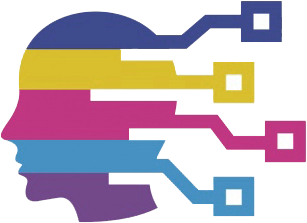The establishment of the Department of Government Efficiency, commonly referred to as DOGE, marks a significant shift in how government agencies operate. This initiative, heralded in January 2023 by Executive Order, mandates each federal agency to form its own DOGE team, consisting of four or more personnel. While the intention seems straightforward—pragmatically promoting efficiency—underlying complexities quickly emerge. These teams, comprised of various employees, represent a fascinating confluence of motives, skills, and identities, blurring the lines between traditional governmental roles and newly crafted efficiency mandates.
The push for efficiency is an attractive narrative; however, it raises questions about accountability and attribution. If everyone is part of the effort, can anyone be held responsible? A lawsuit filed by the AFL-CIO and additional labor organizations challenges the depth of DOGE’s reach, questioning whether well-intended initiatives can inadvertently infringe upon citizens’ privacy rights. Critics argue that the pursuit of eliminating waste, fraud, and abuse should not equate to granting broad access to private information. This sentiment invites a broader discussion: can an agency as pioneering as DOGE afford to overlook the potential consequences of its expansive directives?
The Workforce Muddle: Who’s Who in DOGE
The ambiguity surrounding who constitutes a member of DOGE is underscored by the diverse backgrounds and affiliations of its personnel. Prominent figures, such as Riley Sennott—a notable figure from Tesla—who was designated as a senior adviser at NASA, exemplify the gray area that now envelops governmental roles. His association with DOGE has been scrutinized, with claims that his actual position lies within the GSA. What does this indicate about identity and claim in a government rife with innovation? It brings to light the reality that employees may wear multiple hats, and the public may not be privy to the distinctions between roles a person undertakes.
Adding to the complexity is a parade of high-profile DOGE team members, some reportedly earning considerable salaries while others appear on the payroll with a peculiar designation of zero salary. This raises pressing questions about transparency, ethics, and the effectiveness of employing individuals with such varied distinctions. A GSA employee’s assertion about observing DOGE affiliates regularly at the office furthers this intrigue. Are these gatherings simply collaborative efforts toward a noble cause, or should there be greater scrutiny regarding their functions and the resources they absorb?
Implications for Government Transparency and Trust
The rising influence of DOGE does not exist in an electoral vacuum; instead, it emerges amid a landscape already rife with skepticism regarding governmental transparency. If inefficiencies in the system are to be streamlined without compromising individual rights, how can citizens be assured of their privacy? The administration might believe in the inherent goodness behind the motivations of DOGE, but history has shown us that unchecked power can pose threats to civil liberties.
The connection to corporate efforts, particularly from the technology sector, necessarily invites concern about conflicting interests and the erosion of public trust. As one GSA employee observed, the “young tech bros” aesthetics surrounding DOGE seem trendy and ambitious but potentially dismissive of the weighty implications involved. When high-profile and privately-affiliated individuals step into the realm of public service, the transformation of government agencies may take paths no one foresaw, complicating the overall mission of bureaucratic simplification.
The Future of DOGE: Expectations and Concerns
Moving forward, the trajectory of DOGE requires vigilant oversight to balance ambition with ethical governance. Innovating how government works is undeniably essential; however, doing so at the expense of public trust may yield long-term repercussions. As stated in prior analyses, efficiency must not come at the cost of transparency. As new developments unfold, stakeholders—including citizens, government employees, and watchdog organizations—must engage in open dialogue regarding the impact of DOGE on society.
By fostering an environment where opinions are exchanged, concerns are addressed, and information is disseminated clearly, DOGE stands a chance to align its aspirations with the foundational values of public service. It remains to be seen whether this newly conceived agency can successfully navigate the dichotomy of progress and protection, or if it will serve as yet another example of an ambitious initiative becoming lost amid bureaucratic ambiguity. The unfolding story of DOGE will be pivotal in determining not just its fate, but the broader narrative surrounding government involvement in our daily lives.

